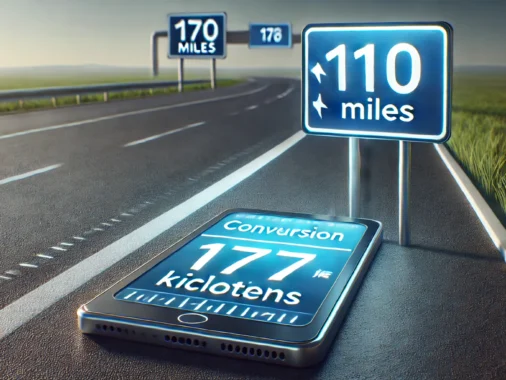Communication is at the heart of human interaction. Whether you’re having a casual chat with a friend, negotiating a business deal, or resolving a conflict, the ability to communicate effectively is essential. Yet, in a world dominated by technology, distractions, and social anxieties, the art of conversation is often overlooked.
Mastering the art of conversation isn’t just about talking—it’s about listening, understanding, and responding in a way that fosters connection, clarity, and trust.
In this guide, we’ll explore how to communicate effectively in any situation, improve your conversational skills, and develop meaningful relationships through better communication strategies.
1. The Importance of Effective Communication
Why is effective communication so important? The ability to express yourself clearly and confidently can impact every area of your life:
A. Personal Relationships
- Strengthens friendships and romantic relationships.
- Helps in resolving conflicts and misunderstandings.
- Improves emotional intimacy and trust.
B. Professional Success
- Enhances networking skills and workplace relationships.
- Helps in job interviews and negotiations.
- Improves leadership and teamwork abilities.
C. Social Confidence
- Allows you to connect with new people effortlessly.
- Reduces social anxiety and improves public speaking skills.
- Makes everyday interactions more enjoyable.
Effective communication is a superpower—and anyone can develop it with the right techniques.
2. The Foundations of a Great Conversation
Before diving into specific communication strategies, let’s establish the core principles of a great conversation.
A. Active Listening: The Key to Connection
Most people listen to reply rather than to understand. Active listening is a game-changer in communication.
How to Be an Active Listener:
- Give your full attention – Put away your phone and focus on the speaker.
- Use positive body language – Maintain eye contact and nod occasionally.
- Reflect and clarify – Summarize what the other person said to confirm understanding.
- Avoid interrupting – Let the speaker finish before responding.
B. Body Language: Communicating Beyond Words
Non-verbal communication plays a crucial role in how your message is received.
Tips for Effective Body Language:
✔ Maintain open posture (avoid crossing arms).
✔ Use gestures to emphasize points naturally.
✔ Maintain steady eye contact (but don’t stare!).
✔ Mirror the other person’s energy to build rapport.
C. Clarity & Conciseness: Say More with Fewer Words
Rambling confuses listeners and weakens your message.
How to Speak Clearly:
- Think before you speak – Structure your thoughts.
- Use simple and direct language – Avoid jargon unless necessary.
- Pause for emphasis – Silence can be powerful in making a point.
D. Emotional Intelligence: Reading the Room
Understanding tone, emotions, and context helps tailor your conversation appropriately.
How to Improve Emotional Intelligence in Conversations:
- Observe reactions – Adjust your approach based on the listener’s responses.
- Empathize – Put yourself in the other person’s shoes.
- Stay calm under pressure – Emotional control improves communication.
3. Mastering Conversation in Different Scenarios
Each conversation is unique, but effective communication principles apply to various real-life situations.
A. How to Start a Great Conversation
First impressions matter. Whether you’re meeting someone for the first time or reconnecting, here’s how to start:
✔ Use a friendly opening – “Hey, how’s your day going?”
✔ Ask open-ended questions – Instead of “Did you have a good weekend?” try “What was the highlight of your weekend?”
✔ Make a relevant comment – “This event has such an amazing vibe, don’t you think?”
✔ Give a compliment – “I love your energy! You always have great insights.”
Avoid one-word answers and overly personal questions at the start.
B. Conversing in Professional & Networking Situations
Business conversations require confidence, clarity, and professionalism.
Networking Tips:
- Be prepared – Have a quick self-introduction ready.
- Focus on the other person – Show interest in their work or achievements.
- Exchange value – Offer insights, solutions, or connections.
- Follow up – A short email or LinkedIn message strengthens the connection.
✔ Example: Instead of saying, “I’m looking for a job in marketing.” Try: “I’m passionate about digital marketing and love optimizing content for engagement. I’d love to hear about your experience in the industry!”
C. Handling Difficult Conversations & Conflict Resolution
Disagreements and misunderstandings happen. The key is staying calm, respectful, and solution-focused.
How to Handle Tough Conversations:
- Acknowledge emotions – “I understand that this is frustrating.”
- Stay solution-oriented – “How can we work together to resolve this?”
- Use ‘I’ statements instead of ‘You’ accusations –
- “You always ignore my opinions!”
- “I feel unheard when my ideas aren’t considered.”
The goal isn’t to win the argument but to resolve the issue productively.
D. Small Talk vs. Deep Conversations
Both have their place in communication:
✔ Small Talk: Great for social settings, casual interactions, and ice-breaking.
✔ Deep Conversations: Ideal for bonding, understanding perspectives, and building trust.
Transitioning from Small Talk to a Deeper Conversation:
- Find a common interest – “You mentioned traveling—what’s been your favorite place so far?”
- Ask ‘why’ or ‘how’ questions – “How did you get into that field? What inspired you?”
- Share something personal – “I love photography too! I recently captured some amazing sunset shots.”
4. Overcoming Communication Barriers
Even great communicators face challenges. Here’s how to navigate common obstacles:
A. Nervousness & Social Anxiety
- Take deep breaths before speaking.
- Focus on the message rather than how you’re perceived.
- Practice conversations in low-pressure environments.
B. Dealing with Difficult People
- Stay patient and composed.
- Don’t take things personally.
- Set boundaries if necessary.
C. Online vs. In-Person Communication
In the digital age, communication often happens via texts, emails, and social media.
✔ In-person: Use tone, facial expressions, and body language to enhance messages.
✔ Online: Be clear and avoid misinterpretations—use emojis or punctuation if necessary.
Example:
- “We need to talk.” (Sounds serious and negative)
- “Hey, let’s catch up soon! 😊” (Warmer and inviting)
5. Becoming a Master Communicator
Great communicators practice daily to improve their skills. Here’s how you can too:
✔ Read & Listen to Great Speakers – Watch TED Talks and interviews.
✔ Expand Your Vocabulary – Learn new ways to express ideas.
✔ Engage in Conversations Regularly – The more you practice, the more confident you become.
✔ Be Curious – Ask meaningful questions and listen actively.
✔ Seek Feedback – Ask friends or colleagues how you can improve your communication.
Conclusion
The art of conversation is a skill that can be mastered with practice and intention. Whether you’re engaging in casual chats, professional discussions, or deep conversations, effective communication is the key to building relationships, gaining confidence, and influencing others positively.
By focusing on active listening, emotional intelligence, body language, and clarity, you can navigate any conversation with ease. Mastering communication will open doors to opportunities, deepen connections, and transform your personal and professional life.






